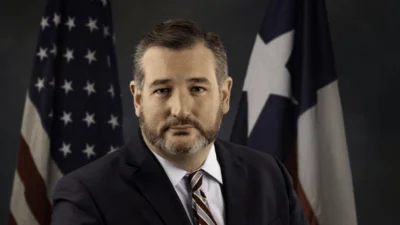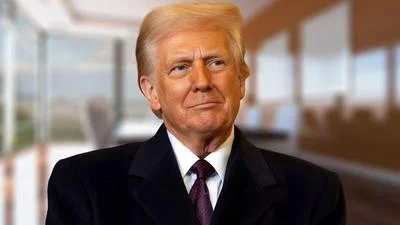Good evening, everyone. Very good to see you all. And let me say first, Secretary Austin and I just concluded a very productive and wide-ranging discussion with our colleagues – Foreign Minister Hayashi, Defense Minister Hamada – and this of course is ahead of President Biden hosting Prime Minister Kishida at the White House on Friday.
It is hard to overstate the importance of the U.S.-Japan Alliance. For more than seven decades, it’s been the cornerstone of peace and stability in the Indo-Pacific – ensuring the security, the liberty, the prosperity of our people and people across the region.
One of the Alliance’s enduring sources of strength is our ability to adapt it to meet the evolving challenges as well as the opportunities before us.
Japan’s new national security strategy, national defense strategy, and defense buildup program reflect the scale and scope of that transformation.
These new strategies make clear Japan’s commitment to invest in enhancing its capabilities, to take on new roles, and foster even closer defense cooperation with the United States and our mutual partners. We applaud Japan’s pledge to double defense spending by 2027.
Japan’s strategies align closely with our own National Security Strategy – both in the key challenges we identify as well as in how to effectively address them.
We’re committed to upholding shared values of democracy and human rights, defending the international rule of law, continuing to lead the world in tackling global challenges that no one country can solve alone, like the climate crisis and deadly viruses.
We agree that the PRC is the greatest shared strategic challenge that we and our allies and partners face.
We stand together with Ukraine against President Putin’s war, which threatens the principles at the heart of the international rules-based order – including that all nations should be able to chart their own path, and have their sovereignty, their independence, their territorial integrity respected.
In the face of these and other challenges, today we discussed ways to deepen our coordination, including on allied command and control, intelligence, surveillance, and reconnaissance, joint and shared usage of facilities, and increased bilateral exercises.
More than ever before, we’re buttressing the U.S.-Japan Alliance through deeper cooperation with other allies and partners, through both regional and multilateral bodies.
In the face of the DPRK’s unlawful and reckless missile launches – including the launch of a long-range ballistic missile over Japan in October – we’re deepening our trilateral cooperation with the Republic of Korea to deter and, if necessary, defend against aggression. That’s a pledge the leaders of our three countries underscored in their November trilateral summit.
Today we held our first formal dialogue in this 2+2 format on extended deterrence – namely, to enhance the capability and credibility of our allied defense against a wide range of threats.
In June of 2022, Prime Minister Kishida became the first Japanese leader to attend a NATO summit. Japan is spearheading the NATO Asia Pacific partners’ group – demonstrating the growing synergy between our Atlantic and Pacific alliances.
We’re working together with our G7 partners to impose coordinated sanctions on Russia for its aggression in Ukraine, and to help Ukraine repair, restore, and defend its embattled energy grid. We look forward to Japan’s leadership in driving an ambitious agenda on these and other priorities during its presidency of the G7 this year, culminating in the Hiroshima Summit.
Japan has also stepped up to help our European friends diversify their LNG supply in response to President Putin’s weaponization of energy.
We’re working to advance peace and security through regional bodies like ASEAN, whose centrality is vital to the Indo-Pacific; and through the Quad, including by working with India and Australia to expand what we call maritime domain awareness, basically giving our partners a better ability to detect and respond to challenges in their territorial waters like illegal fishing, trafficking, climate-related disasters.
At the United Nations, we’re rallying member states to defend the rights at the core of the United Nations Charter. It’s been less than two weeks since Japan took its non-permanent seat at the Security Council; already we see its leadership on key priorities, like peacebuilding, Afghanistan, and the ministerial that the foreign minister will chair tomorrow on the rule of law.
And because our National Security Strategy is so bound up in our economic and energy security, we’re strengthening our cooperation in these spheres as well. In May we joined a dozen other economies that represent 40 percent of global GDP to launch the Indo-Pacific Economic Framework, which sets out a roadmap to help our economies grow faster and fairer, so that all of our people can reach their full potential.
Last month we kicked off the first Japan-U.S. Energy Security Dialogue; tomorrow our governments will co-host the Fifth Indo-Pacific Business Forum in Tokyo.
We’re constantly expanding the horizons of our cooperation – beyond even our planet. Later this week, the foreign minister and I will sign a new agreement on U.S.-Japan cooperation in space. This agreement has been a decade in the making; it covers everything from joint research to working together to land the first woman and person of color on the Moon.
The bottom line is this: We and our people are always stronger and more secure together. Today we’ve taken yet another step toward tightening already incredibly strong bonds.
With that, Yogi, the floor is yours.
FOREIGN MINISTER HAYASHI: (Via interpreter) Secretary Blinken, Secretary Austin, Minister Hamada, and I have just come out of the Japan-U.S. 2+2 meeting, which we had in person, where we engaged in extremely meaningful exchange of views. During the past year since the previous 2+2 meeting, Russia’s aggression of Ukraine, an event that shakes the foundation of international order, occurred, placing the international community at historical crossroads. In the midst of elevated severity in the security environment, today’s Japan-U.S. 2+2 took place at a timing shortly after the release of strategic documents by both countries.
Today’s meeting delivered three major outcomes, and let me go through them one by one.
First, based on the strategic documents of our two countries, we were able to hold in-depth discussions to confirm the alignment of the recognition on both sides over the regional strategic environment thoroughly and in detail. Specifically, first of all on China, China presents an unprecedented and the greatest strategic challenge. Its foreign policy to recreate international order to serve its self-interest is a grave concern for the Japan-U.S. Alliance and for the whole of the international community.
Upon confirming such shared recognition, we confirmed that Japan and the U.S. will continue to be united in raising objections against China’s attempts to change status quo in the East China Sea, including its behavior that seeks to undermine long years of administration by Japan of the Senkaku Islands.
We also confirmed our strong opposition against unlawful claims and coercive and provocative efforts and actions by China in the South China Sea. We reaffirmed that the basic positions of our two countries over Taiwan remains unchanged, and confirmed the importance of maintaining peace and stability of the Taiwan Straits, which is an essential element for the safety and prosperity of the international community. At the same time, we concurred that there have not been any changes to our policies to strengthen communication with China, including in the area of security.
On Russia, we reaffirmed our notion that aggression of Ukraine shakes the foundation of international order; accused Russia for its reckless nuclear rhetoric and attacks against civilian infrastructure; and concurred to continue our strong support to Ukraine. In addition, we shared our concern over the enhanced military cooperation between China and Russia.
Further, on North Korea, we strongly accused them for the launch of ballistic missiles during the past year at unprecedented frequency, and reaffirmed our unwavering commitment towards the complete denuclearization of North Korea based on UN Security Council resolutions.
With our positions perfectly aligned, we agreed to continue to work closely together in responding to the North Korea issue, including the pursuit of immediate resolution of the abduction issue. And we agreed about deepening the trilateral cooperation between the three countries.
Secondly, we affirmed the further endeavors to bolster the deterrence and response capabilities of the Japan-U.S. Alliance in view of the new strategies based on the increasingly severe security environment. I welcomed the U.S. resolve to optimize the force posture in the Indo-Pacific, including Japan, and we decided to continue close consultation how to further optimize the U.S. force posture in Japan, including the readjustment of the USFJ realignment announced this time.
Extended deterrence was one of the agenda, and there was in-depth discussions at the ministerial level. Spending some time having discussed that, we reaffirmed the strong U.S. commitment to the defense of Japan, underpinned by the full range of U.S. capabilities, including nuclear. Furthermore, there was an affirmation of strong support by the U.S. on the new security policy of Japan in that it will fundamentally reinforce the deterrence capability of the Alliance.
In addition, we agreed on the importance of deepening our cooperation in the areas of space and cyber, the promotion of technological cooperation, the further strengthening of information security. The fact that we were able to agree on the announcement of the applicability of Article V of the Japan-U.S. Security Treaty on attacks on others in outer space was a significant achievement in terms of the reinforcement of deterrence capability of the Alliance as a whole.
Thirdly, we once again affirmed the importance of the reduction of the impact on the local communities, including Okinawa. We also reaffirmed that in order to avoid the continued use of Marine Corps Air Station Futenma, the relocation to Henoko is the only solution.
Furthermore, I once again requested the U.S. side on safe operations with utmost consideration to the impact on the local communities; appropriate responses to incidents and accidents, including sharing information in a timely manner; and on environmental issues, and confirmed our close coordination.
The joint announcement – the joint statement issued as a result of this 2+2 is a presentation of the vision of a modernized Alliance (inaudible) posture to win in the new era of strategic competition. The vision will be executed speedily, and together with Minister Hamada, Secretary Blinken, and Secretary Austin, we will constantly bolster the Japan-U.S. Alliance. Thank you.
SECRETARY AUSTIN: Well, good afternoon, everyone, and thanks to everyone for being here. At the outset, let me thank my friend and colleague, Secretary Blinken, for hosting today’s U.S.-Japan 2+2 Ministerial Meeting. Thanks, Tony.
Minister Hamada, Minister Hayashi, I want to underscore my support for the bold decisions that Japan has made in your 2022 national security strategy, your national defense strategy, and your defense buildup program. There is clear strategic alignment between the visions of President Biden and Prime Minister Kishida. It is a shared commitment to uphold the rules-based international order and to strengthen resilient partnerships around the globe. And the essential U.S.-Japan Alliance is at the center of these efforts. Our respective defense strategies provide a strong foundation for our ongoing work to modernize the U.S.-Japan Alliance. In addition, Japan’s commitments to substantially increase its defense spending and to invest in defense institutions and infrastructure and capabilities will accelerate our Alliance’s efforts. I’m grateful that we’re meeting at such a consequential time, as Japan strengthens its own defense and further contributes to regional peace and stability.
Today we welcomed an historic Alliance decision to optimize U.S. force posture in Japan by forward stationing more versatile, mobile, and resilient capabilities. These actions will bolster deterrence in the region and allow us to defend Japan and its people more effectively. In an increase – in an increasingly challenging security environment, we’ve decided that the 12th Artillery Regiment would remain in Japan and be reorganized into the 12th Marine Littoral Regiment by 2025. We will equip this new formation with advanced intelligence, surveillance, and reconnaissance, as well as anti-ship and transportation capabilities that are relevant to the current and future threat environments. These posture updates adhere to the basic tenets of the 2012 realignment plan, and they will strengthen our Alliance’s ability to maintain regional peace and stability.
We also discussed updating our Alliance’s roles and missions so that Japan can more actively contribute to regional security alongside the United States and other likeminded partners. And so in our meeting today we strongly endorsed Japan’s decision to acquire a counterstrike capability, and we affirmed that close coordination on employing this capability will strengthen the U.S.-Japan Alliance. We also discussed a number of key issues including our shared interest in peace and stability in the East and South China Seas and around Taiwan and our commitment to – to the denuclearization of North Korea, and our efforts to increase multilateral cooperation with the Republic of Korea, Australia, and other likeminded partners and our growing cooperation across all domains, including space and cyber.
Now, as you’ve heard me say before, the People’s Republic of China is a pacing challenge for the Department of Defense. Japan and the United States remain united in our concern over China’s destabilizing actions, and I want to reaffirm the United States ironclad commitment to defend Japan with the full range of capabilities, including nuclear, and underscore that Article V of the mutual security treaty applies to the Senkaku Islands. And tomorrow Minister Hamada and I will sign new arrangements that will increase opportunities for the Japanese and the United States defense enterprises to closely cooperate on advanced technologies as well as increased linkages between our respective industrial bases. And our close consultations today have advanced our Alliance’s efforts to address common challenges ahead of President Biden and Prime Minister Kishida’s meeting at the White House this week.
I’ll close by reiterating that the U.S.-Japan Alliance remains a cornerstone of our Indo-Pacific strategy, and it’s critical to upholding a free and open regional order. Our Alliance is stronger than ever, building on a foundation of teamwork, trust, and shared values that has underpinned our relationship for decades. And so there is no challenge that we can overcome if we continue to work shoulder to shoulder. Thank you.
DEFENSE MINISTER HAMADA: (Via interpreter) At the outset, I extend my deepest appreciation to Secretary Austin, Secretary Blinken, and members of the U.S. side for having organized this meeting. My three colleagues have already mentioned the severity of the security environment surrounding us. As we live in this age of intense competition, in order to sustain a new rules-based international order and free and open Indo-Pacific, the role that the Japan-U.S. Alliance must play has never been so enormous. The national security and defense strategies of our two countries that have been prepared most recently are highly consistent at a degree never seen before and will serve as a strong infrastructure for our bilateral cooperation.
What is noteworthy is the importance attached to the – attached by both countries to integrate all means and approaches to deter a situation from occurring. Alignment of our positions as such has been significant. At the same time, strategies don’t end by just preparing them. In light of the severity of the security environment, both Japan and the U.S. is expected to put their strategies into action swiftly and steadily.
Based on the new strategy, in order to expeditiously achieve the fundamental reinforcement of Japan’s defense capabilities, I am committed to making maximum efforts to gain new capabilities, including counterstrike capability and to enhanced persistent warfare capability. I am much encouraged by the strong support shown by Secretary Austin and Secretary Blinken as I shared with them such resolve. Japan and the U.S. must properly engage in discussions on strengthening partnership.
During today’s consultations, we agreed on the need to realize division of roles and missions assuming the fundamental reinforcement of Japan’s defense capabilities. The four of us agreed to promote initiatives in extensive areas, including effective operation of counterstrike capability based on bilateral cooperation, strengthening collaboration in space and cyber, and deepening cooperation in equipment and technology.
We also agreed to deepen cooperation with partners, including Australia, ROK, ASEAN, and Europe, to expand partnership and based on our Alliance, because in the increasingly important extended deterrence in the region, I have listened to the extensive viewpoints of the U.S. from Secretary Austin. Based on that, in order for the U.S. extended deterrence to be even more reliable and resilient, we discussed what the two countries need to do in order to optimize the U.S. force posture in Japan. The current realignment plan was coordinated in 2012, but in order to deal with the increasingly severe security environment, both Japan and the U.S. have decided to readjust the plan while maintaining the fundamental principles.
Keeping the 3rd Marines Division command and the 12th Marines Littoral Regiment in Okinawa will allow the forward-deployed U.S. force posture to have more versatile capabilities, be more resilient and more mobile. This effort will significantly strengthen the deterrence and response capabilities of the Japan-U.S. Alliance, and at the same time it will demonstrate the robust commitment of the U.S. to the defense of Japan. In order to execute these plans, we will coordinate closely with the U.S. side.
I also mentioned that for the stable stationing and activities of USFJ, the understanding by the local community such as Okinawa is crucial. We will continue to work on the reduction of impact on Okinawa. It was extremely significant that, at a timing so soon after the two countries had formulated the strategic documents that will guide the future national security and defense policies, that the four ministers responsible for defense and foreign policy got together and had the opportunity to engage in in-depth discussions on how to implement their respective strategy. I shall continue the discussions in order to bolster our Alliance. Thank you.
Original source can be found here.









